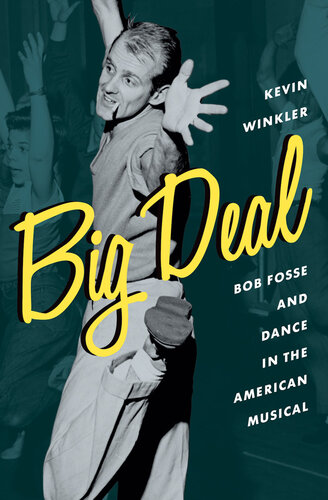
Big Deal
Bob Fosse and Dance in the American Musical
کتاب های مرتبط
- اطلاعات
- نقد و بررسی
- دیدگاه کاربران
نقد و بررسی

February 1, 2018
With his training in dance and 20 years as curator and archivist at the New York Public Library, Winkler is the ideal choice to write this exhaustively researched, detailed study of the dancing and directing of a master stylist whose innovations changed American theater and film. (Winkler even claims that the opening sequence in Fosse's 1979 film All That Jazz "virtually made the modern MTV music video.") The author's first contact with choreographer/director Bob Fosse (1927-87) came in 1982, when Winkler danced in the chorus of a revival of Little Me. From 1973, when Fosse won the show business Triple Crown with a Tony for Pippin, an Oscar for Cabaret, and an Emmy for Liza with a Z, he was the man with the "muscle" (Winkler's term) in all his productions. Fosse demanded more and more control of his projects, and as he aged, they sometimes went sour: his final movie, Star 80 and musical Big Deal were critical and box office flops. VERDICT One of the many virtues of this attractive and exciting book is that it makes dance accessible to readers who love theater but aren't dancers themselves.--David Keymer, Cleveland
Copyright 2018 Library Journal, LLC Used with permission.

January 1, 2018
A former professional dancer and New York Public Library archivist and curator enlists the services of both experiences to describe and analyze the career of Bob Fosse (1927-1987), the legendary dancer, choreographer, and director.Winkler (Their Championship Seasons: Acquiring, Processing, and Using Performing Arts Archives, 2001), now a blogger for the Huffington Post, has a focused agenda. He takes us through Fosse's career (stage, TV, and film) show by show, dance number by dance number, and explains the birth of the project, Fosse's involvement, the roles of key others (producers, performers, technical crew), the critical and public reception, and the consequent effects on Fosse and the cultural world he inhabited and--for a time--dominated. Although the author periodically refers to Fosse's personal life (his marriages and myriad affairs--he was far from a loyal spouse), this information is principally contextual, but due to the recent flurry of charges of sexual impropriety by alpha males, this context will be timely. Indeed, sexuality was part of Fosse's "thing," and Winkler includes a brief scene of him chasing Mariel Hemingway around a room trying to convince her that sex with his current leading lady was de rigueur. (She escaped.) The author reminds us of Fosse's numerous awards, including an astonishing eight Tony Awards for choreography as well as one for direction. Lovers of dance--and members of the dance cognoscenti--will especially enjoy Winkler's detailed approach; general readers, probably less so. The text is not especially reader-friendly--lengthy paragraphs, few textual breaks and divisions--and Winkler is hardly disinterested. He is a Fosse fan and sees even in his less-than-successful efforts the glow of genius, a glow that the author's determined prose and careful explication convince us is indeed there.Thorough research combines with deep affection and admiration to create a clear analysis and tribute.
COPYRIGHT(2018) Kirkus Reviews, ALL RIGHTS RESERVED.

February 15, 2018
The Fosse style ( hunched shoulders, turned-in stance and stuttering, staccato jazz movements ) is part of the American musical-theater lexicon, and its creator is one of the most important director-choreographers in recent history. This latest entry in Oxford's Broadway Legacies series trains a spotlight on Robert Louis Fosse and his evolution as both artist and individual. His legacy encompasses Broadway hits of the 1950s (The Pajama Game, Redhead, Damn Yankees), 1960s (How to Succeed in Business without Really Trying, Little Me, Sweet Charity) and 1970s (Pippin, Chicago, Dancin') as well as forays into film (Cabaret, Lenny, All that Jazz) and television (Liza with a Z). In 1973, Fosse became a show-business triple-crown winner with an Oscar for Cabaret, an Emmy for Liza with a Z, and a Tony for Pippin. Winkler's research is thorough, and his writing is perceptive, reflecting his careers as both archivist and dancer. He also provides a carefully curated selection of photographs and a glossary of dance terms. An essential purchase for any performing-arts collection and a must-read for all theater buffs.(Reprinted with permission of Booklist, copyright 2018, American Library Association.)

























دیدگاه کاربران